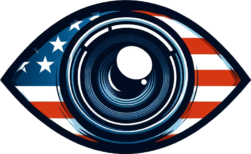“If you have nothing to hide, you have nothing to worry about” is a common retort from the average citizen that supports government surveillance. While many think that “having something to hide” equates to immoral or unethical activity, the fact is that many people do have things to hide, and there is not necessarily anything wrong with that.
As long as human nature contains an element that desires control over others, people will have reason to hide. Even the simplest members of the animal kingdom need refuge from those who would prey upon them. The very survival of many species depends upon the ability to hide and human beings are no different. History is replete with examples of individuals who escaped slavery and genocide and heroic individuals who helped them.
One of the most popular examples of this is Harriet Tubman, who risked her own well-being after escaping slavery to assist in the liberation of others. Through a network of passages and safe houses known as The Underground Railroad, many worked together to smuggle escaped slaves into free states and Canada.
Anne Frank survived for two years in the attic of Miep Gies before being discovered and sent to a concentration camp. Although she died in captivity, her father, Otto Frank, ultimately survived.
A more contemporary example is the story of Immaculee Ilibagiza. At the onset of the Rwandan Holocaust, she fled to the house of a neighboring pastor where she was hidden with seven other women in a 3’x4’ bathroom for three months. Her entire family was brutally murdered with the exception of a brother who was studying abroad.
The common thread among these stories, and others like them, is that in order for these individuals to survive, they had to hide. We are creating a world in which there will be no place to hide. In this world, slaves remain with their masters, young girls go directly to camps without a 2-year reprieve, and seven young women are hacked to death with machetes in an ethnic cleansing.
So why wouldn’t the average person take scenarios like this into consideration when advocating for surveillance cameras everywhere? After all, the average high-school graduate is familiar with Anne Frank and Harriet Tubman. The answer to this question is normalcy bias. This refers to a tendency of people to believe that things will always remain as they are and underestimate the likelihood of negative events and the horrible results that come with them. In other words, “that can’t happen here.”
Consider for a moment the life of the Frank family before the Nazis took over. What was the daily experience of Imaculee before the Rwandan genocide? Could an African have imagined being captured and sent across an ocean to live the life of a slave? In each of these circumstances, life was normal—until it wasn’t.
We cannot neglect to consider the dangerous repercussions that would come from a planet that is covered in an interconnected system of cameras and microphones. We cannot neglect to consider the power that is wielded by those who are in control of such a system. If we neglect to consider this, we do so at our own peril.
Elizabeth Melton
Elizabeth Melton is a founding member of Banish Big Brother, focusing on education and strategy against government surveillance—a passion ignited after attending a shocking local smart city meeting. She is also the founder of The Gray Matter Project, producing documentaries on critical issues that deserve greater attention.
